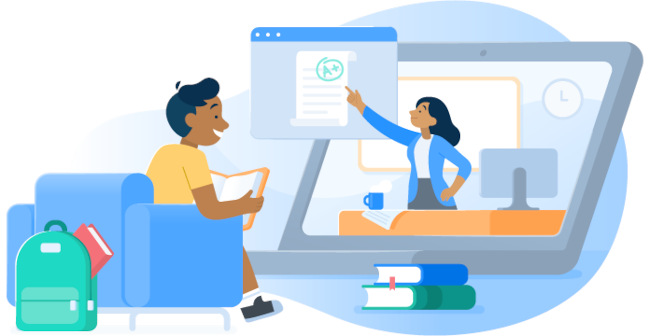Student Safety & Classroom Management: Building the Roadmap
Effective classroom management, especially when teaching remotely and in synchronous classrooms, is key to student success

Effective classroom management, especially when teaching remotely and in synchronous classrooms, is key to student success. In Part 2 of this series, Dr. Kecia Ray talked with educators and professional experts who shared their classroom management tips and best practices that have kept their students engaged and on-track, as well as help the teacher more easily manage lesson delivery and assessment.
“I don’t see distance learning going anywhere,” said Denise DeJuliannie, technology director for Eden Valley-Watkins ISD 463 in Minnesota. “It is here today, and it will be here tomorrow.”
“[The current distance learning going on] is a model that’s going to outlive the pandemic, although probably on a smaller scale,” agreed Jarrett Volzer, General Manager MDM and Classroom Technologies for Securly. “I think the pandemic kind of opened the doors for those who were playing around with these [distance learning] ideas. You saw new ways to do it, new advantages to doing it, and new ways to apply it to different groups of students.”
Watch the free on-demand webinar here.
Key Takeaways
Embracing new learning. Leaders at Olympia School District in Washington recently surveyed parents in regard to remote and distance learning, and more than 600 said if given the opportunity, they would keep their students in that environment forever, according to district CIO Marc Elliott. “We were surprised that we got that feedback from parents, but their students flourished in this model. They said, ‘We like this. This works for us, and we would prefer to have this type of online school,’ which is more intimate than to what we've been seeing as an online school option.”
In response, Olympia is developing its own virtual academy environment with dedicated online-only teachers and students, which will free up face-to-face teachers to concentrate on the students in front of them.
SEL support. At Eden Valley-Watkins, social-emotional learning is promoted through a support network that’s available to all students and staff. It’s provided an opportunity for students to be seen and heard, not only by connecting with teachers but all staff, including lunch ladies. “We're just going to elaborate a lot more during the summer with more professional development,” said DeJuliannie. “We have a leadership group of students who have gone through this training as well so they have a core group of friends and peers who they can go talk to as well.”
Tech & Learning Newsletter
Tools and ideas to transform education. Sign up below.
The district has taken other smaller measures, such as enabling students to activate virtual backgrounds during video classes, so those who are potentially embarrassed by their home conditions can stay engaged but enjoy some privacy and comfort.
Being fully in remote learning until recently, Olympia was facing a similar situation. “If you want to put a student in an uncomfortable situation, tell them to turn on their cameras and show what their houses are like,” said Elliott. Many are embarrassed of the conditions at home, which is another issue that teachers have had to navigate.
To try and overcome this and support SEL, teachers and administration have needed to get really creative. For example, one school started an online Dungeons & Dragons club to engage students. “We just needed the kids to be around each other, and to have some of that inner personal connection,” said Elliott.
Right tools for the job. Part of keeping students engaged and on track is having the right monitoring platform in the first place, said Volzer, who adds that there’s been a difference in how these platforms are now being used. “Traditionally the classroom management tools have been more of seeing what the kids are doing more and more or less keeping them focused on a task, whereas now we've seen a change with the remote classes. In particular, these are being used more for engagement and communications than previously.”
Making sure that platform is compatible with other teaching and learning tools is also critical. “When a teacher doesn't have to worry if their content is going to work on a particular device that a student is bringing into their classroom or using remotely, that helps tremendously,” said Dejuliannie.
Of course, PD for any technology tools continues to be an emphasis in every district. “I have the three most awesome instructional technology coaches that work with me,” said Elliott. “Last spring, in a month and a half they offered over 300 professional development sessions. That was massively beneficial to our teachers to get them as ready as possible, but also to tell them, ‘You're going to be okay, this is going to be okay, you're going to make it.’”
Leaders at both Olympia and Eden Valley-Watkins are planning on summer PD programs to varying degrees.
Most PD tends to be tool specific, Volzer said, but districts should also consider the parent communication piece of the puzzle. If a district is deploying a tool or if a device that goes home, it’s important that they also provide resources and information to families as well. “Now there's a little bit more time to think, so make sure that all the appropriate stakeholders are informed of what's going on, so they know what the teacher is doing when the teacher is engaging with the student during class time,” he said.
More T&L Webinar Recaps
Ray Bendici is the Managing Editor of Tech & Learning and Tech & Learning University. He is an award-winning journalist/editor, with more than 20 years of experience, including a specific focus on education.
